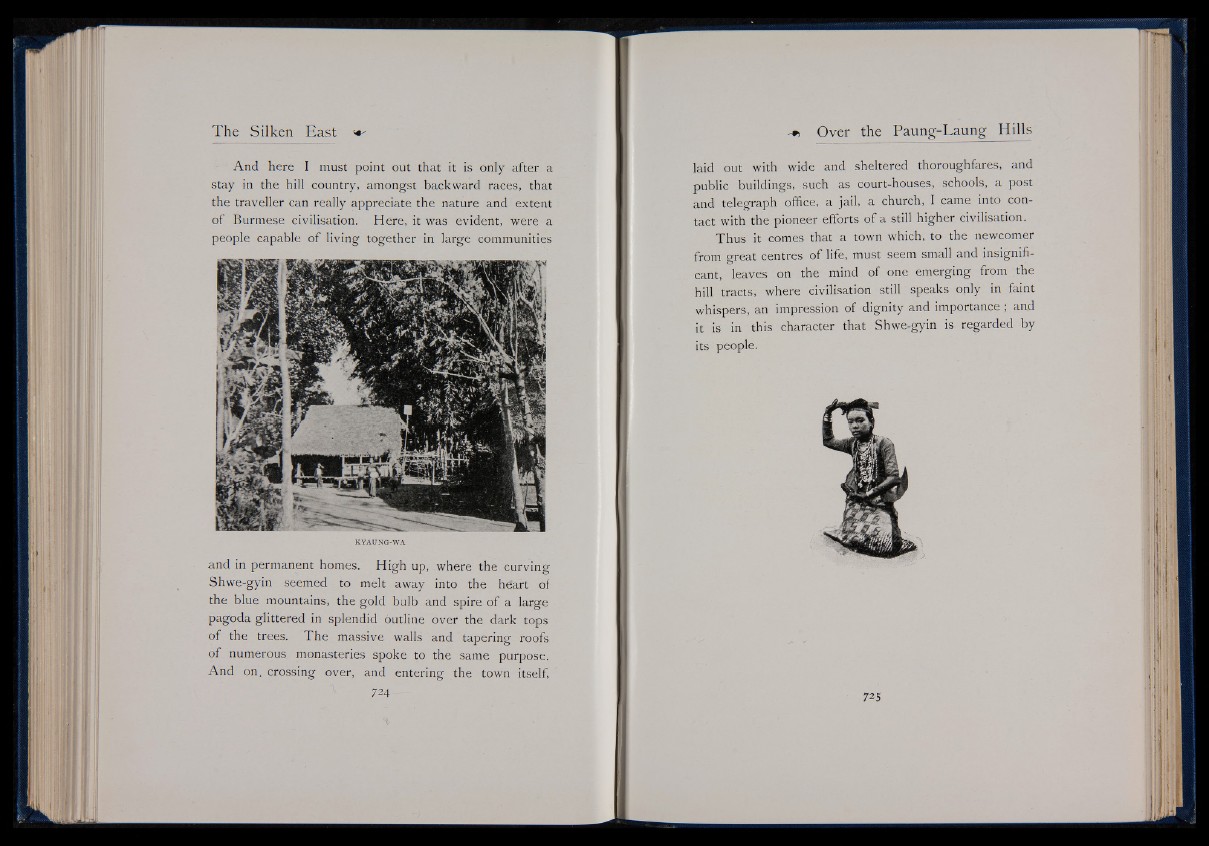
And here I must point out that it is only after a
stay in the hill country, amongst backward races, that
the traveller can really appreciate the nature and extent
of Burmese civilisation. Here, it was evident, were a
people capable of living together in large communities
KYAUNG-WA
and in permanent homes. High up, where the curving
Shwe-gyin seemed to melt away into the he'art of
the blue mountains, the gold bulb and spire of a large
pagoda glittered in splendid outline over the dark tops
of the trees. The massive walls and tapering roofs
of numerous monasteries spoke to the same purpose.
And on, crossing over, and entering the town itself,
laid out with wide and sheltered thoroughfares, and
public buildings, such as court-houses, schools, a post
and telegraph office, a jail, a church, I came into contact
with the pioneer efforts of a still higher civilisation.
Thus it comes that a town which, to the newcomer
from great centres of life, must seem small and insignificant,
leaves on the mind of one emerging from the
hill tracts,, where civilisation still speaks only in faint
whispers, an impression of dignity and importance ; and
it is in this character that Shwe-gyin is regarded by
its people.
I' I
I